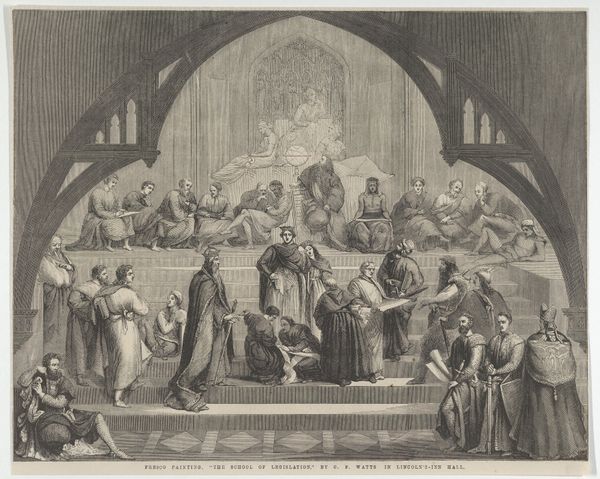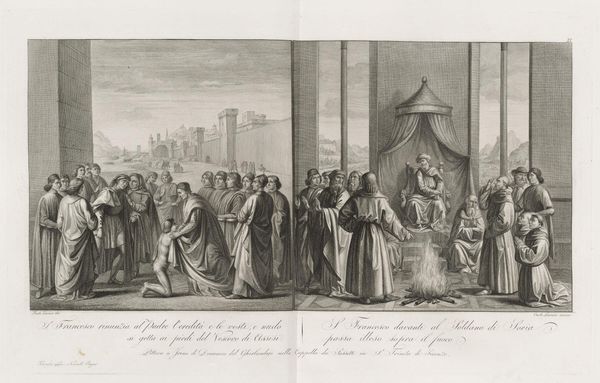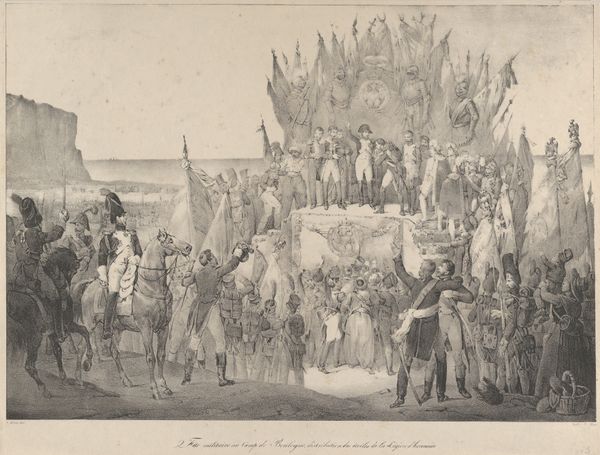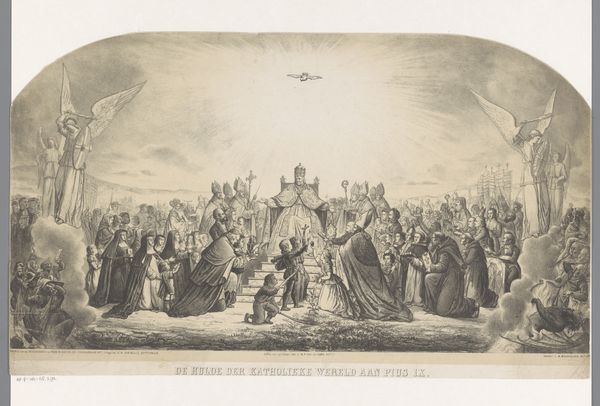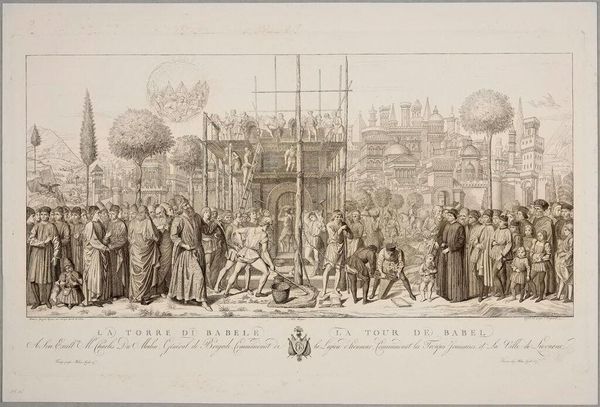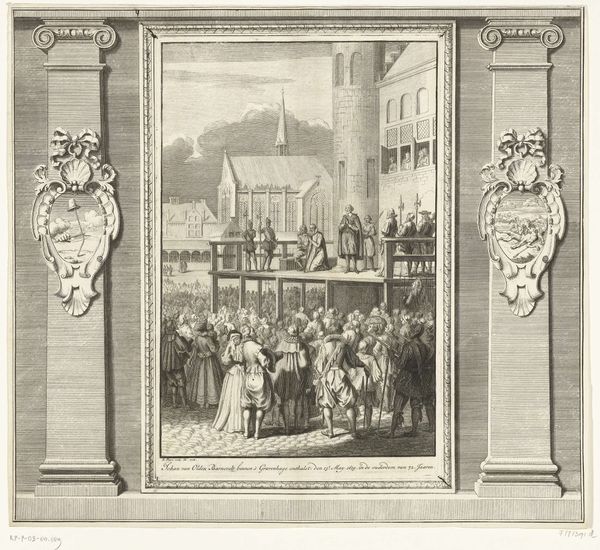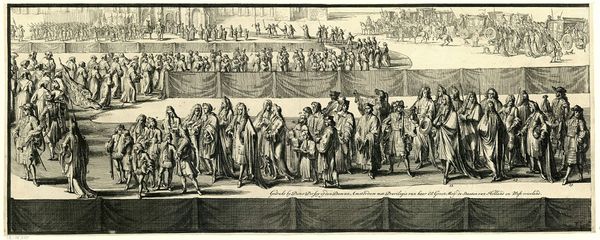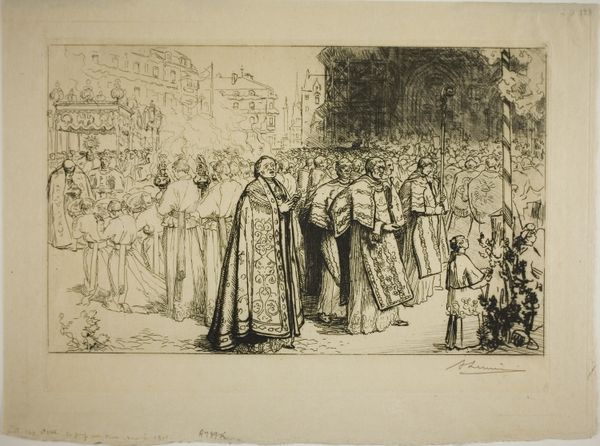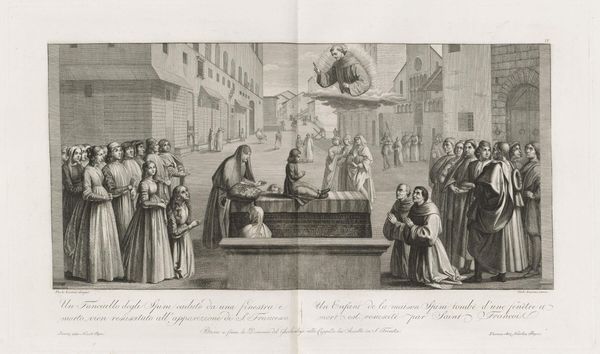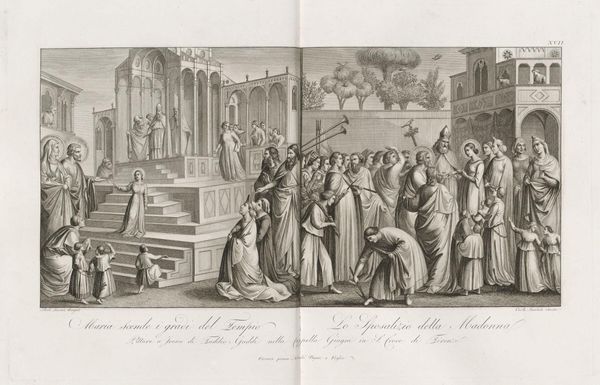
drawing, print, etching, engraving
#
drawing
#
neoclacissism
#
narrative-art
# print
#
etching
#
history-painting
#
engraving
Dimensions: 212 × 335 mm (plate); 220 × 345 mm (sheet)
Copyright: Public Domain
Curator: Welcome! We're looking at "The Improvement of Morals," an engraving and etching produced around 1786 by Daniel Nikolaus Chodowiecki, currently residing at the Art Institute of Chicago. Editor: It strikes me as didactic, yet strangely…airy. The light tones, almost like a washed-out dream, contrast oddly with what I assume is supposed to be a serious moral lesson. The composition feels quite stage-like, framed almost. Curator: Precisely! Note the proscenium arch, embellished with putti and foliage. Chodowiecki uses this pictorial framework to present a social commentary in a highly structured manner. The linearity and balanced forms align with Neoclassical aesthetics. Editor: But look closer. While the stage presents "correct" morals, the people on the periphery engage in anything but! Is that a balloon escaping with a passenger in the background? Are those onlookers mimicking the "proper" behaviour as performance or truly taking heed? What hierarchies are being performed here, in what could also be interpreted as a theater? Curator: That very tension between ideal and reality is key. The grid of images at center functions almost like a powerpoint presentation for moral reform. Notice the clean lines and clarity. Editor: I can’t ignore how social class informs the whole endeavor. The 'improved morals' clearly pertain to those observing – who seems to represent diverse social strata – while those doing the instructing occupy positions of power. Is this engraving simply reinforcing those hierarchies? And what about those folks lounging in the right foreground; are they intentionally excluded from the didactic exchange or is their exclusion a sign of refusal? Curator: A valid point. We could also analyze how Chodowiecki employs the etching medium itself. The fine lines, the gradations of tone—all serve to create a sense of order and reason. It is a controlled medium, ideal for conveying such structured moralizing narratives. Editor: Control seems the operative word. A performance for who? An enforcement of what norms? An illusion in soft-toned lines on a flat sheet. Curator: Well said. I'm struck by the composition and how it creates, within itself, a series of dialogues: periphery and center, darkness and light. Chodowiecki’s vision is complex, despite its seemingly straightforward message. Editor: The artwork, initially seemingly simple, now exposes an intricate social discourse! It asks critical questions of not just late 18th century Prussian morals, but, still resonating today, poses necessary inquiry.
Comments
No comments
Be the first to comment and join the conversation on the ultimate creative platform.
